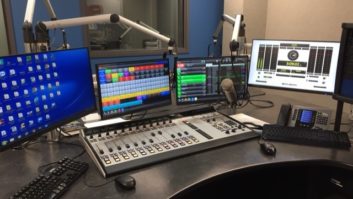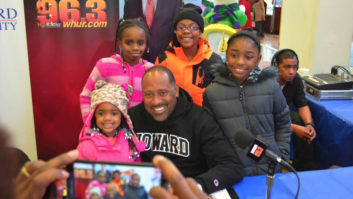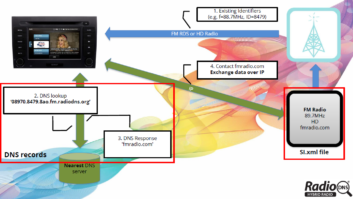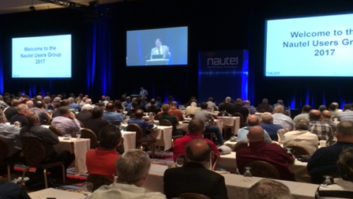Making Money with Multicast
Oct 1, 2012 12:08 PM, By Kevin McNamara
A few months ago I wrote about some different ideas that could provide a good revenue stream using the HD2 and/or HD3 channels. The main point of that article was that it is not enough to just provide some programming out there and wait for the listeners to flock all over this new gem, rather there needs to be programming that will make a listener want to listen, or more importantly, want to purchase an HD Radio receiver.
I come from a slightly different perspective than many others who write in this industry trade. My first 25 years of employed bliss was working in radio and television in an engineering capacity, mainly director of engineering positions at the local and corporate levels, primarily in the top markets. I left that to form my own business that focuses on building wireless communications systems for a variety of private and municipal clients. That now makes me a listener in terms of having an outsider’s viewpoint and as such, perhaps can provide a different spin to this particular subject.

The dilemma of HD Radio
To understand the money-making opportunities of HD Radio, let’s look at the problems that need to be defused.
Problem 1: In researching this article about making money with multicast, I see a lot of buzz words that describe the phenomena of HD Radio like “revolutionary.” While that may be true, there are a whole bunch of revolutionary technologies out there competing with it. They may also be able to compete with HD Radio more creatively, since:
� Many are not a slave to qualitative audience measurements. Most broadband services can get real-time data of how many people are listening, what they are listening to, and generally a much broader knowledge of the listener/subscriber.
� Many services are not constrained by a service area or interference from atmospheric noise, etc.
� Services like Pandora can also tailor content to the listener level and get real-time feedback about their preferences.
Problem 2: Getting enough radios in the market is another challenge. The most recent numbers suggest about 20 percent of new car models (under $35K) coming out in 2012 offer HD Radio standard. I’ve also seen numbers that place total HD Radio receiver penetration well under 5 percent. The last I checked, keeping up with the demand of HD Radio receivers has not been an issue with any manufacturer.
There is a push to make it mandatory that mobile phone manufacturers include FM receivers inside of each phone. While this would certainly increase the count of deployed receivers, it is unlikely that most people would use it, if for no other reason, than phones that do offer FM receivers require the use of earphones, since they use the earphone wires as the antenna. In my personal observations, the only people I have seen (myself included) use the FM receiver are at the gym listening to the rebroadcast TV audio feeds. Another issue to consider is that new car radio receivers are not traditional receivers; you know the kind with buttons? They are now simply command consoles that offer everything from entertainment to control and monitoring of the automobile systems. People are going to need a reason to choose the terrestrial station over the broadband or satellite provider. The radio is essentially going to be buried inside of this console.
– continued on page 2
Making Money with Multicast
Oct 1, 2012 12:08 PM, By Kevin McNamara
Problem 3: The programming must be compelling. Since the 1920s broadcasters have been good at figuring out what programming appeals to the most amount of listeners within their service area. This usually came in the form of rotations of the same 30 or 40 songs repeated throughout the day combined with a local personality. That worked well until the advent of alternative program delivery platforms that are able to provide greater choices and with fewer interruptions. Providing an alternative format that utilizes the same fundamental programming formulas used in radio for the past 80 years, will not draw new listeners to your multicast channel.
Multicast revenue opportunities
As I pointed out in my previous article, the real opportunities with HD Radio and multicasting are those that can exploit specific types of content, which a terrestrial station can implement, that would not be practical on other platforms. In my mind, the greatest opportunity for multicasting is with highly focused local content. This is what radio does, and has done, better than any other platform in history yet economics has caused the industry to move away from serving the local market in favor of using programming originating from a central location and shared among several operations.
From a listener’s perspective, here are a few thoughts of what would draw me into the HD Radio multicast world, and hold me there for a while:
� Local sports broadcasts and news: I think this is a huge missed opportunity in several markets. Have you been near a high school stadium on a Friday night? The City of Allen Texas has just built a $60 million stadium for its high school football program. There is a great deal of passion and local interest in high school sports throughout the country, but few stations are seizing the opportunity. Creating a mini ESPN-like format catering to local sports would absolutely draw in listeners and advertisers not to mention something that would drive new HD Radio receiver sales.
� Local News channel: This does not mean running a syndicated format, it means creating a full-time local news presence that cater to smaller populations within your service contour. Partner with the small local newspaper in order to get content.
� Run audio podcasts and blogs: It’s not hard to find interesting content provided by the residents in particular areas. Use topics that would have appeal to people in that area. This is along the lines of public access programming, but not limited to specific issues or topics.
� Local entertainment channel: An audio version of the content seen in monthly entertainment guides and newspapers. Report on all local upcoming events inside your service area, these would include local concerts, clubs, fairs, theater, restaurants, festivals, etc. You could also air live broadcasts of local musicians and other events.
I think there is still a great opportunity to generate revenue with HD Radio, but the key is to find that niche that can only be filled by you.
McNamara is president of McNamara Associates, Cape Coral, FL.
October 2012
Clear Channel Seatlle rebuilds, audio processing update, the Digigram Cancun 222-Mic is reviewed, and we compare nearfield monitors….












